Away All Boats
Brief Synopsis
Cast & Crew
Joseph Pevney
Jeff Chandler
George Nader
Lex Barker
Julie Adams
Keith Andes
Film Details
Technical Specs

Synopsis
In late 1943, former Merchant Marine captain Dave MacDougall accepts a demotion to lieutenant in order to join the Navy and fight in World War II. On his new amphibious attack transport ship, the Belinda , Dave is awakened in the middle of the night to meet the newly arrived captain, Jebediah S. Hawks. Before announcing their orders, transporting 1,400 soldiers to Pearl Harbor, the captain also outlines the ship's shortcomings and the inexperienced soldiers and sailors. The next morning, Dave notes examples of the unskilled crew, including "Sacktime" Riley, a lazy deckhand; Lieut. Jackson, who thinks he can arrange the gear "scientifically;" Gilbert Hubert, a filthy hillbilly who loves his job mulching garbage; and the executive officer, well-to-do naval reservist Commander Quigley. As they set sail, Hawks gruffly informs Dave that, although he recognizes the sacrifices Dave has made, he wants him to forget the past and accept Hawks as the ultimate authority. Soon after, the Belinda suffers its first attack by the Japanese, and the gunners miss their targets. Hawks appears coldly harsh in his reprimand, but in private, labors under the heavy burden of ensuring the safety of his large group of untrained men. At sea days later, the crew practices their landing maneuvers, proving themselves awkward and slow. During one beach run, Dave's boat tips and his leg is hurt. Hawks visits him in the sick bay and reveals that he will use Dave's injury to his advantage, taking him away from the maneuvers and into the control room. Noting Dave's disappointment, Hawks states that he also wanted a better assignment, and plans to make the Belinda a flawless fighting unit in order to earn a place on a cruiser. Soon, they join the battle in Makin, in the South Pacific, where Hawks expects to set time and efficiency records. Upon reaching the beach, the soldiers suffer many losses and tensions between officers escalate. Back on the ship, Quigley calls for volunteers to find a passage through a treacherous lagoon in order to rescue a trapped troop. Although Dave wants to go, Ensign Kruger is assigned instead, and while Lieut. Fraser snubs Quigley for not volunteering to go, Dave asks Hawks why he was not chosen. Hawks once again insists that he needs Dave on board, and mentions that Quigley also wanted to go but was refused, raising Dave's estimation of the executive officer. Kruger manages to find a way through the lagoon and save the troop, earning a Purple Heart after his leg is shot. Over the next months, the Belinda sees heavy action throughout the Pacific. One day, inexperienced Ensign Twitchell identifies approaching planes as Japanese, and Quigley must quickly save the planes, which are actually American, from friendly fire. Morale sinks as more men are injured and their mail is held up for months, and a brief respite on Guadalcanal results in a fistfight in which Twitchell is knocked out. Soon after, Hawks orders a sailboat built for him, using all of the supplies and manpower on the boat. With twice as much work, the men complain bitterly, but soon finish the magnificent Albatross . Fraser originally joins in the protests, but Dave explains to him that Hawks only wanted to give the men a common object of hatred, in order to stop their in-fighting. One night, Hawks trips and fractures his skull, but convalesces quickly. He appears stronger than ever after a mine threatens the ship and then is detonated by one of the Belinda 's sharpshooters, but back in his cabin, Hawks studies his shaking hands. When the mail finally arrives, Dave reads a letter from his wife, Nadine, reminiscing about how they met: They share an instant attraction, and although Nadine is disappointed that Dave does not try to kiss her on their first date, she is thrilled with the passionate second date. He tries to dissuade her from marriage to a sailor who will often be away, but she will not be put off, and instead makes each homecoming a cause for celebration. She recalls the day they learned that Pearl Harbor had been bombed, and now hopes he can feel her love across the vast ocean. Soon after, Quigley, who has proven himself an able soldier, wins command of his own ship, and Dave is promoted to Executive Officer. They set off for Okinawa, and along the way Hawks reveals to Dave that he has blocked two attempts from the Navy to give Dave his own command, needing his services on the Belinda too much. Noting Dave's anger, Hawks admits that he suffers blinding headaches and must have a competent replacement available. They arrive in Japan, where a huge fleet of kamikazes immediately attacks. After two ambushes, Dave surveys the damage: twenty-six men have died, the ship has suffered extreme impairment and Hawks has received another head injury. With the captain almost comatose, Dave takes charge, ordering a hole patched in the Belinda 's hull. While the men struggle to fix the hole, the ship begins to list, but they miraculously finish the patch before the ship sinks. Just then, however, Dave is informed that the propeller has broken, leaving them drifting aimlessly. Hawks seems only to be babbling, but while inspecting the smaller transport boats, Dave realizes the captain has advised him to tow the Belinda to safety. The crew assembles the boats with unprecedented efficiency, and eventually the safety of the nearby island is within sight. Hawks struggles to his feet to see with his own eyes that the Belinda is out of harm's way, after which he finally allows himself to collapse. Mourning his dead commander, Dave states that Hawks has made each of them a better soldier than they could ever have hoped.

Director
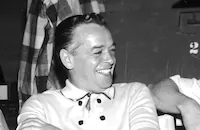
Joseph Pevney
Cast

Jeff Chandler

George Nader

Lex Barker
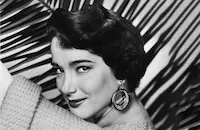
Julie Adams

Keith Andes

Richard Boone
William Reynolds

Charles Mcgraw
Jock Mahoney
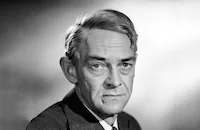
John Mcintire
Frank Faylen

James Westerfield
Don Keefer
Kendall Clark
George Dunn
Charles Horvath
Jarl Victor
Arthur Space

Parley Baer
Hal Baylor
Sam Gilman

Grant Williams
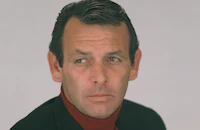
David Janssen
Roger Mcgee
Floyd Simmons
Raymond Bailey
Rod Williams
Robert Hoy
Henry Wills
George Ramsey
Mickey Kuhn
Bob Herron
Gerard Masterson
Chuck Courtney
Ralph Scalzo
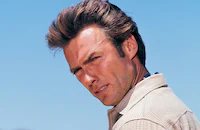
Clint Eastwood
Dabbs Greer
Dan Barton
Voltaire Perkins
Dan Mummert
Ken Clayton

Nicky Blair
Jerry Mickelson
Ken Miller
Dick Tretter
Jimmy Yahes
Dewey M. Tindell
Donald R. Clark
Don House
Jack Bellin
Walter Smith
Crew
Bob Barrett
Peter Berkos
Leslie I. Carey
Leon Charles
Howard Christie
Oliver Emert
Lt. Colonel F. R. Findtner Usmc
William Fritzsche
Russell A. Gausman
Joseph Gershenson
Alexander Golitzen
Marshall Green
Captain R. V. Gregory Usn
James C. Havens
George Hoaglund
Ted J. Kent
Joe Lapis
Terry Nelson
Richard H. Riedel
Tom Shaw
Ted Sherdeman
Frank Skinner
Joan St. Oegger
Clifford Stine
Tom Tutweiler
James Welch
Bud Westmore

Film Details
Technical Specs

Articles
Keith Andes (1920-2005)
Born John Charles Andes on July 12, 1920, in Ocean City, New Jersey, Keith been began performing in his teens for school productions and for local radio stations in his hometown. After he graduated with a B.A. in education from Temple University in 1943, he pursued a stage career in earnest, and in 1947 scored a triumph in the Broadway musical The Chocolate Soldier, where he won a Theatre World Award for his performance. That same year, he made his film debut as one of Loretta Young's brothers in The Farmer's Daughter (1947). Although his film career never quite took off, one could certainly envy him for playing opposite two of the hottest blonde bombshells of their generation: first with Marilyn Monroe Clash by Night (1952); and then Jayne Mansfield in The Girl Most Likely (1957).
If Andes lacked the star power to be a consistent Hollywood lead, he certainly had no problems with television. Here, his stalwart presence and commanding baritone made him more than servicable for television through three decades: (Goodyear Theatre, Playhouse 90, The Ford Television Theatre); '60s: (Perry Mason, The Rifleman, Star Trek, The Outer Limits, Glynis); and '70s (Cannon, The Streets of San Francisco).
Andes made his last notable screen appearance in the Al Pacino vehicle And Justice For All (1979), before falling into semi-retirement and doing occassional voice work. He is survived by two sons, Mark, Matt; and three grandchildren.
by Michael T. Toole

Keith Andes (1920-2005)
Quotes
Trivia
Notes
The closing credits contain the following written statement: "A grateful salute to the Amphibious forces, U.S. Navy, and the Amphibious Assault Troops of the U.S. Marine Corps and the U.S. Army." Away All Boats was based on the best-selling memoir of the same title written by Kenneth M. Dodson, a former executive officer of the naval attack transport the USS Pierce. According to studio press materials, Universal's vice-president in charge of production, Edward Muhl, bought the screen rights to the novel in March 1954. A January 1955 Hollywood Reporter news item reported that the filmmakers originally considered locations in Puerto Rico.
Universal press materials supply the following information about the production: the studio earned the permission of the U.S. Navy to join 200 ships and 10,000 men in the Virgin Islands to film a three-day assault on the Puerto Rican island Vieques, some of the footage from which was included in Away All Boats. The entire cast and crew boarded in St. Thomas and filmed aboard the USS Randall, renamed the Belinda for the film, and shot deck and aerial photography of the Navy's maneuvers. Director Joseph Pevney hired at least twenty-five Marines to act as extras in the film. After one month of production in the Caribbean, the company returned to California to shoot the remaining scenes at the San Diego Naval Base and the Universal lot. According to a May 1966 Daily Variety item, Howard Christie planned to produce a sequel to Away All Boats, set in Vietnam, but that film was never made.

Miscellaneous Notes
Released in United States August 1956
Released in United States on Video May 5, 1988
Released in United States Spring May 1956
VistaVision
Released in United States Spring May 1956
Released in United States on Video May 5, 1988
Released in United States August 1956













